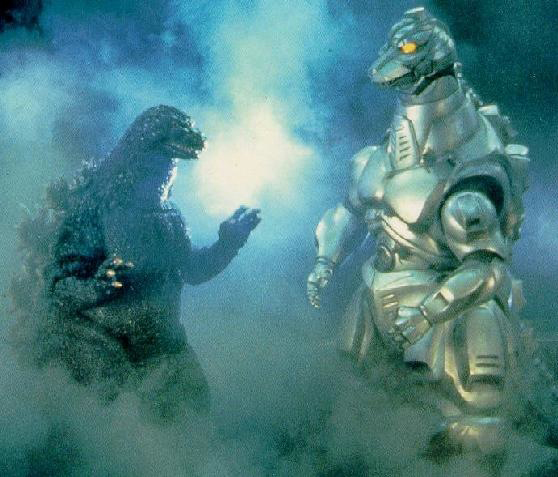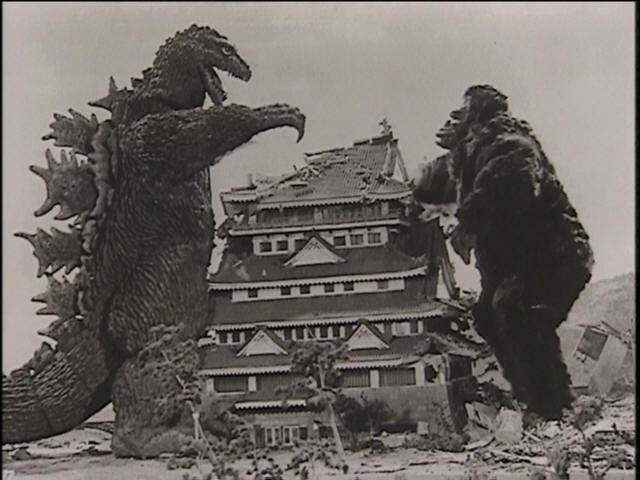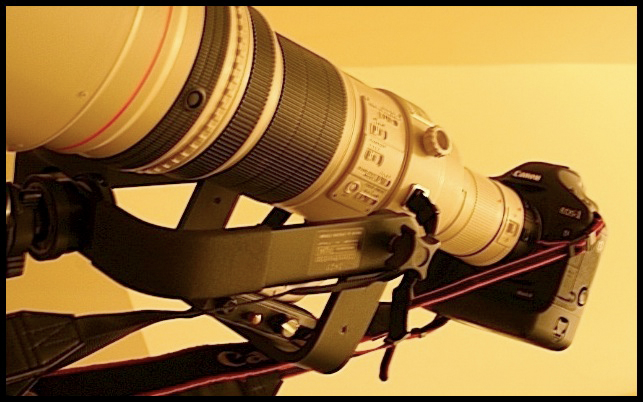If
you're a really, really serious bird-watcher, and if (like me) you've
always wanted to capture stunning images of tiny birds in action, then
you surely know that the problem of finding a telephoto lens of
sufficient magnification and optical quality at an affordable price is
a Big Problem. As I
showed in a previous
article, the most popular focal length, by far, for really
hard-core bird photographers is 800mm. Focal lengths as short as
400mm can be useful as well, especially for specific applications (such
as ducks in flight), but by and large 800mm is preferred. The
question is, what is the best 800mm lens combo when image quality and
price are taken into consideration?
This is precisely the question which haunted my fevered brain one year
ago as I considered my options for achieving roughly this focal length
in a Canon EF-mount system:
(1) Sigma 800mm f/5.6 lens
(2) Canon 600mm f/4 lens + 1.4x teleconverter = 840mm
(3) Canon 500mm f/4 lens + 1.4x teleconverter = 700mm
(4) Canon 500mm f/4 lens + 2.0x teleconverter = 1000mm

I immediately discounted the last two options, since, in the case of
the Canon 500mm f/4 + 1.4x TC, the resulting focal length of 700mm
seemed too short for the tiniest birds that I might find myself hunting
come spring, and in the case of the 500mm + 2.0x TC, I was concerned
that the use of the 2.0x TC, even Canon's expensive "EF Extender II"
model, would too severely degrade image quality, since 2x
converters are fairly widely maligned by those who've used them.
Thus, the options were between the 800mm Sigma prime lens and the Canon
600mm plus a 1.4x TC for an effective focal length of 840mm. I
again applied the reasoning that the use of teleconverters can only
reduce image quality, and therefore decided that a prime 800mm lens was
the way to go. Since Canon didn't (at that time) offer an 800mm
lens in EF mount, this left me with one option: The Sigmonster.

I was basically betting that an 800mm prime lens would be sharper than
any 600mm + 1.4x TC combination, even if the 800mm lens was "third
party" and the 600mm was a "name brand". It seemed a reasonable
bet at the time.
It
has now been exactly one year since I purchased the Sigmonster, and I
can honestly say that this lens has made me very, very happy. With it I have
peered into the lives of countless birds, and in the process produced
thousands of pleasing images. I am indeed so fond of this lens
that I have often resisted the urge to bring it with me to bed at
night. And no, I'm not joking.
Like many birding enthusiasts, however, I am always on the lookout for
anything that can get me a better view of the bird. Even if my
current equipment seems ideal, I can't in good conscience dismiss the
possibility that there may be an even better
view that can be had with the proper equipment. And so, as the
winter months passed and the spring began to draw ever nearer, I began
once again to consider my options for an upgrade. This time
around, there was only one unexplored possibility, and that was the
Canon EF 600mm f/4L lens.

I only recently discovered that Amazon.com
not only sells a wide variety of photographic equipment, but also
offers an extremely generous 30-day return option. This is a very
useful fact! For me it meant that I could perform a thorough
comparison of the Canon 600mm lens with my Sigmonster and come to a
confident conclusion.
It didn't take 30 days.
Indeed, after my first "in the field" (meaning "out my front window")
session with the Canon 600, I had already practically made up my
mind. All I can say is WOW.
Let's begin, however, with the more controlled tests which I conducted
inside my home (at 4:30am, no less --- sleep does not come easy to
those obsessed with bird photography). My "labratory tests"
consisted of a $20 bill (obviously, I paid for the lens with a credit
card...) scotch-taped to the bathroom door at the end of the
hall. I took three photos with the Sigmonster (all
tripod-mounted, with mirror lock-up and remote shutter release) and
then three with the Canon 600 + 1.4x TC, and chose the sharpest of the
three in each case. The image below shows these first results;
the Sigmonster is on the left and the Canon 600 (with 1.4x TC attached)
on the right:
(click to zoom)
(click to zoom)
As you can see, the Canon 600mm + 1.4x TC actually appears sharper than the Sigma prime
lens. When taking the shot with the Canon I moved the tripod back
about 2-3 feet to account for the difference in magnification between
800mm and 840mm focal lengths. Thus, even at a (slightly) greater
distance, the Canon rig produced an image with more detail and
noticeably more contrast (note the intensity of black in the image on
the right, as compared with the brownish quality of the Sigmonster
image on the left).
Here's another sample, with again the Sigma on the left and the Canon
on the right:
(click to zoom)
 (click to zoom)
(click to zoom)
This pair of images was obtained by again exercising each lens three
times and taking the best of the three. In this case the
Sigmonster can be seen to be almost as sharp as the Canon, though with
again significantly less contrast (i.e., observe the difference in
black levels between the images). Of course, obtaining this
result required more trials, since the Sigmonster lacks image stabilization --- i.e., no
matter how sharp either lens is, the image-stabilized lens will tend to
show its sharpness more immediately, due to the lack of bluriness
induced by camera shake.
Here's another result showing both the contrast (blackness) and detail
advantage of the Canon setup:

An important caveat in all these examples is that in the case of the
Canon rig, it is a Canon
camera (the EOS 1D Mark III) focusing a Canon lens, as opposed to a Canon
camera focusing a non-Canon lens. It is of course conceivable
that the non-Canon lens may be optically equal to the Canon lens, but
may exhibit poorer image quality in practice due to the Canon camera
not communicating properly with the non-Canon lens and therefore not
achieving as precise a focus as with the true Canon lens. Be that
as it may, since I'm not willing to switch to a Sigma camera body,
these results suggest that the Canon lens is the more useful tool of
the two.
As a final example with the $20 bill, notice how the Canon image
(right) reveals the hexagonal patterning in the empty space much more
readily than does the Sigma image (left):
(click to zoom)
(click to zoom)
It is of course abundantly clear from these artificial tests that the
Canon rig, despite the use of a teleconverter, is fully the equal of
the Sigmonster, and may even be superior in terms of contrast and
focusing accuracy. I find this result very surprising, since
teleconverters are well-known to degrade image quality, even if only
slightly. That the rig with the TC could perform better than the
rig without is a truly remarkable testament to the inherent sharpness
of the Canon 600mm lens. It's unfortunate that I have little
interest in 600mm as a focal length for general-purpose birding.
After scrutinizing these test images I have also been able to confirm a
long-held suspicion of mine: that the Sigmonster produces images with
an unnatural yellow cast to them. This past year I have noticed a
frequent need to reduce the level of yellow in my images, which I
assumed was a common artifact of color "temperature" as produced by
natural lighting scenarios. Since the Canon does not produce such
a yellow cast, I now suspect it is a by-product of the lens coatings
used by Sigma on their glass surfaces. Regardless of its origin,
I must admit that I strongly prefer the color fidelity of the Canon
over that of the Sigma.
Test
images of dollar bills (or even $20 bills) are only convincing up to a
point. What matters to the serious bird photographer is the
performance of a system in the field. In order to address this
issue I turned to my front window.
My first willing assistant was this lovely Eastern Bluebird (Sialia sialis):
(click to zoom)
One thing you'll notice if you view the zoomed image by clicking on it
is that the bokeh (i.e., the
out-of-focus background) is pleasingly smooth. Another thing
you'll notice is that the image is quite sharp, with many feather
details readily apparent at first glance. Of course, the color is
also quite vibrant, despite the fact that I left the saturation
untouched in post-processing.
Here's a Brown-headed Cowbird (Molothrus
ater) male that visited my birdbath this morning:
(click to zoom)
Again you'll note
the smooth bokeh and the sharp feather detail. These images were
all shot in RAW format, with fairly minimal post-processing in
Photoshop. Based on the LCD images viewed on the camera during
shooting, I could tell right away that I was getting images fully as
sharp as what I was used to getting with the Sigmonster.
One thing I did notice, however, was that the Canon 600mm lens was
slightly front-focusing, as
you can see by looking at the in-focus region on the ground just in
front of this Mourning Dove (Zenaida
macroura):
(click to zoom)
Front- and
back-focusing issues truly infuriate
me. They are in fact the reason I invested in the 1D Mark III
camera body, since this body at present is the only one in the world
(to my knowledge) which allows user-defined autofocus calibration. Via a
menu option, one can quickly dial in an AF compensation value to adjust
for the front/back focusing tendencies of individual lenses.
After shooting the Mourning Dove shown above I dialed in a +5 AF adjustment (i.e., 5 units "backward", or away
from the camera), which soon was modified to +7.
(click to zoom)
After some more experimentation I quickly found that +10 produced quite
nice results. The robin pictured above and again below patiently
aided me in this process. Note that front/back-focusing can be
corrected by sending the lens and camera in to Canon to have them
adjusted by Canon's service technicians. Many people send their
lenses in immediately after purchase to have them calibrated, and
though most of the time this appears to solve the problem, there are
reports of cases in which people sent in their equipment only to have
it come back in worse shape than before!
I my particular case, the front-focusing may very well be due to the
fact that I'm using a 25mm extension
tube to reduce the minimum focus distance from 18 feet to about
10. The Canon
literature clearly states that autofocus should not be used when an
extension tube is attached, presumably because it confuses the
camera. Another
possible side-effect of the use of the extension tube is some
distortion around the edges of the image --- in some of the later
images on this page you'll notice that the edges and corners appear not
only to be out of focus (which is entirely normal, since I focused on
the bird, not on the surrounding branches) but also somewhat distorted,
or "stretched". I never noticed this with the Sigma, but maybe I
just never looked for it.
(click to zoom)
Despite the front-focusing issue (which appears to be corrected now by
the in-camera microadjustment), the Canon rig appears to be fully as
sharp as the Sigmonster, while also providing other useful perks.
According to Canon, the lens is "weathersealed", which I gather means
that a bit of light rain won't harm it, though submersion in a lake
obviously will. Unlike the Sigmonster, the Canon 600 also sports
a protective front glass element which protects the main objective lens
from possible scratching or degradation of the lens coatings by the
elements (such as salt spray at the beach). The Canon of course
sports image stabilization, which could be extremely useful on windy
days. Also, the focusing speed on the Canon is very fast, though
I have to admit that the focusing speed of the Sigmonster never seemed
terribly slow to me.
My 1D body does still "rack out" the Canon 600 + 1.4x TC combo
occasionally when searching for the focus, just as it did with the
Sigma. Although the Sigma has a focus-limiter
switch (unlike the zoom-version of the Sigmonster, which lacks
such a switch), I have rarely used it, since it tends to become an
annoyance when I forget to reset it for the next shooting
location. The Canon focus-limiter switch has more settings, which
in theory should be useful for specific scenarios, but I again expect
to use it very, very infrequently. I tried using it this morning
on birds in my front lawn, but found that one setting worked for close
birds but not for further birds, even though I have a very small lawn.
As just a brief demonstration of the value of image stabilization,
here's a bluebird that I photographed with the IS turned on.
Because the IS effectively eliminated all camera shake, the image
required no sharpening whatsoever
during post-processing:
 (click to zoom)
Keep in mind that Canon recommends that all photos taken with its
digital cameras be sharpened in post-processing, since the
anti-aliasing filter in front of the CMOS sensor reduces sharpness at
image capture.
With the Sigmonster I virtually never got by without applying some
sharpening during post-processing. Of course, once I had applied
the sharpening to the image, the output of the Sigmonster was usually
very pleasing. But if I can get sharp images straight out of the
camera with the Canon lens, then that's definitely a good thing, since
it means I'll be able to spend less time fiddling with the sharpening
filter in Photoshop, and more time attending to exposure and color (or,
better yet, more time out in the field actually taking photos!).
(click to zoom)
I should emphasize
that my Sigmonster is the non-zoom
model, which some people have implied is less sharp than the zoom
version. I've never compared the two models, though the MTF
charts on the Sigma web site do show some slight difference in the
performance of the two models, with one model having (if I remember
correctly) slightly better contrast than the other. I suspect
these MTF charts are the source of the rumor about the difference in
sharpness between the two models. If that's so, then it should be
noted that MTF charts can be quite unreliable. Indeed, Canon
acknowledges that their own MTF charts are only "theoretical".
Furthermore, there can be quite a lot of variation between individual
units, so that one unit may be more or less sharp than another unit of
exactly the same model. I've seen this myself with Canon
teleconverters. The point is, the apparent difference in optical
quality between my copy of the Sigmonster and the Canon 600mm + 1.4x TC
combo may not be representative of all Sigmonsters and all Canon 600mm
lenses (especially given the wide variation in teleconverter quality,
as I've already mentionted).
 (click to zoom)
With that caveat
aside, my brief experience with the Canon 600mm suggests that Canon's
optics technology may indeed be a step ahead of the third-party brands,
and this could of course manifest itself in differences between other
lenses. What's interesting is that the zoom version of the
Sigmonster costs nearly as much as the Canon 600mm (and weighs nearly
as much), so that the third-party lens makes little sense in terms of
price difference. However, if it is true that the zoom version of
the Sigmonster is optically superior to the non-zoom (of which I am
somewhat doubtful), then it may be equal to the Canon 600 + 1.4x TC
combo, but with the added convenience of a 300mm-600mm zoom range,
which the Canon rig lacks. I personally have never wished I had
such a zoom capability, but some users swear that it is a godsend.
(click to zoom)
One thing that I
have been eager to test out on the Canon rig is its ability to produce
sharp images when operated wide-open
--- i.e., when the 840mm rig is used at its maximum aperture of
f/5.6. I always felt when using my Sigmonster that I needed to
stop down to f/8 or f/11 in order to obtain the sharpest images.
This of course could conceivably be due to the extremely shallow
depth-of-field which is induced at such a large aperture.
Nevertheless, I always had the feeling, from the few times I tried
shooting at f/5.6, that the lens was simply not as sharp wide open as
when stopped down. It is in fact well-documented that most lenses
do improve in sharpness when stopped down by 1 or 2 f-stops.
Owners of the big Canon telephoto lenses --- the 500mm and 600mm f/4
lenses in particular --- often insist, however, that these lenses are tack sharp wide-open. From
the few shots I've taken with the Canon rig at f/5.6, I can't yet
discount this claim. Here's a Slate-colored Junco (Junco hyemalis) shot at very close
range, at f/5.6:
 (click to zoom)
You can see the effects of the very shallow depth-of-field in this
photo. While the front half of the bird is very sharp, the rear
half is completely out-of-focus. In this case I don't think
that's a bad thing; for some photos that can still work well to produce
an aesthetic image. In this case I'm inclined to think that the
lens is indeed quite sharp wide-open, though I'm not sure how often
I'll use it at that aperture, due to the depth-of-field issue.
Note, however, that the depth-of-field does increase with distance to
the subject, so that for birds at a greater distance, f/5.6 may indeed
work out OK.
(click to zoom)
Like the
Sigmonster, the Canon 600mm lens is enormous.
Although only about 1.3 lbs heavier than my (non-zoom) Sigmonster, the
Canon 600 is bulkier. It's not going to be any easier to carry
around in the field, and I've already had some difficulty with
that. Although I typically do carry around the Sigmonster all
day, I usually end up paying for it by being dead tired and sore when I
get home.
The Canon is well-balanced, though, and the carrying handle is quite
nice. The handle is padded underneath, and also leaves a wider
gap with the lens body, so that when shooting on a tripod I'm finding
it convenient to hold the handle with my left hand in order to steady
it (I don't lock my tripod head when shooting, so everything is loose
--- that's good for tracking birds in motion, though not-so-good for
keeping the camera steady when taking the shot).
(click to zoom)
So, what don't I
like about the Canon 600mm lens so far? Not much. The
mounting "eye" for the strap is only large enough for one strap to
attach at a time, which I don't like, since I prefer to attach two
straps simultaneously, both to improve comfort while carrying the lens
via the strap, and also as an insurance policy against one strap
breaking (which has happened to me before).
I also wish it had a much closer minimum-focusing distance. As I
noted above, I have to use a 25mm extension tube in order to reduce the
close-focus distance from 18 feet to about 10, though the tube seems to
induce some distortion around the edges of the image, which can be
distracting when there are almost-in-focus elements at the edge of the
image, such as branches and the like. What might be a better
option is to not use the extension tube at all, but to switch to my
other lens (the Canon 400mm f/4 DO + 1.4x TC) for close subjects, since
the latter lens has a close-focus distance of about 11 feet.
Since I always go into the field with the 800mm rig on one shoulder and
the 400mm lens on the other shoulder, this is a viable solution for me.
`  (click to zoom)
The Canon 600mm comes with a very nice
travel case --- a hardshell trunk with a soft molded interior that
perfectly fits the lens. With the hood removed, the lens actually
becomes quite short, so that the case isn't all that big:

So, in summary, I think the Canon 600mm + 1.4x TC combo is an ideal
birding lens, especially for small birds such as warblers, sparrows,
chickadees, and the like. Assuming you get a good copy of
both the lens and the TC (without any front/back-focusing issues)
and/or are able to fine-tune the autofocus performance via in-body
calibration as in the Mark III, there isn't much reason to choose the
Sigmonster over the Canon rig, unless zooming is important to you (it
isn't to me --- but I'm pretty good at finding a little bird with a
narrow field-of-view lens). There is a modest price difference,
but when you're buying such an expensive lens anyway, it makes sense to
save up a few more pennies and spring for the more expensive
Canon rig, which offers several features not found in the
Sigmonster.
As of this writing, there are two other big telephoto lens options for
birders which are soon to be released, and which may prove to be even
better options than either the Sigmonster or the Canon 600mm + 1.4x TC
rig. The first is the new Canon EF 800mm f/5.6L IS USM lens which
is due to be released in a few months. This lens has a list price
of $16,000, though the MSRP is a paltry $12,000 (!). Canon claims
that the new 800mm lens is optically superior to the 600 while weighing
less, indicating that it could be an amazing birding lens for those who
can afford it.
The other new development is, coincidentally, a lens from Sigma which
people are calling the SigZilla:
a 500mm zoom lens with a fixed f/2.8 aperture, weighing 35 lbs, and
having an MSRP of $24,999 (!). Wow.
And if you think those are way out there, there's always the Canon
1200mm f/5.6L lens, which B&H actually has in stock as of this writing.
The price? A mere $99,000. Better hurry before they're gone!
|
|



